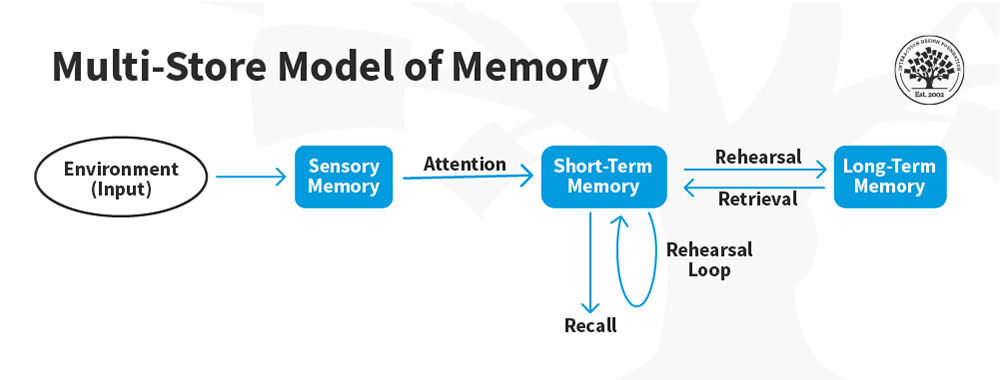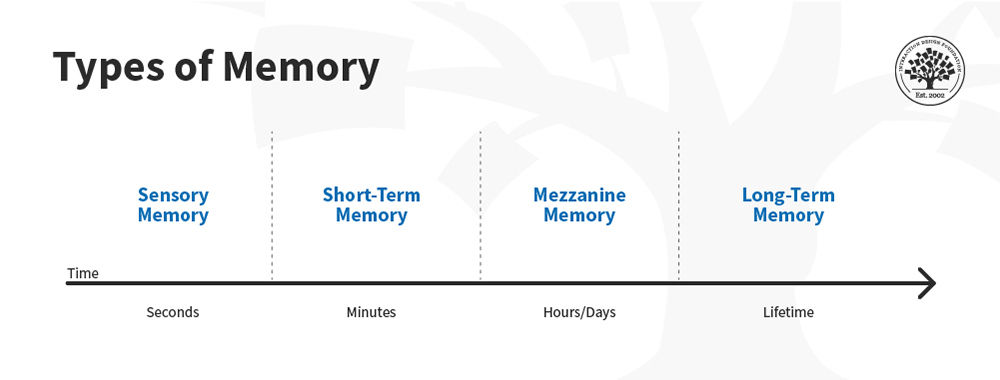The sensory, short-term, and long-term components of memory come from the well-established multi-store model of memory, first proposed by Atkinson and Shiffrin in the late 1960s (see below for the original paper). While not without its detractors, it is still the most commonly accepted description of how our memories work.
The diagram shows the relationships between the three stores and the activities or events that “progress” memories from shorter-term stores, eventually to long-term memory, while considering factors such as color blindness to ensure accessibility in visual representations.
In this clip Professor of HCI, Alan Dix discusses long-term memory and some of the transitions between memory stores.
Show
Hide
video transcript
- Transcript loading…








